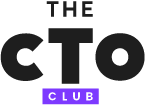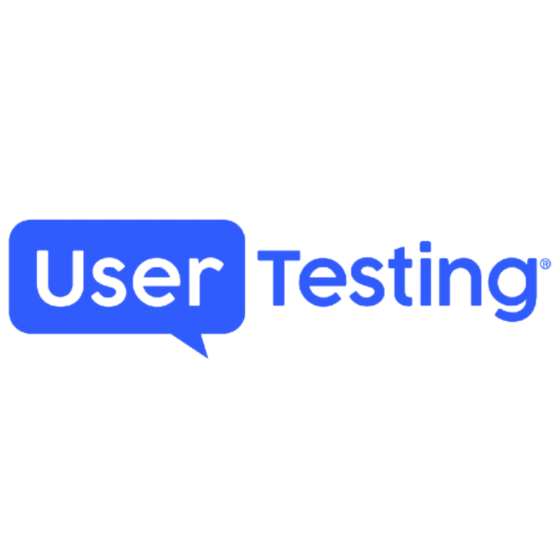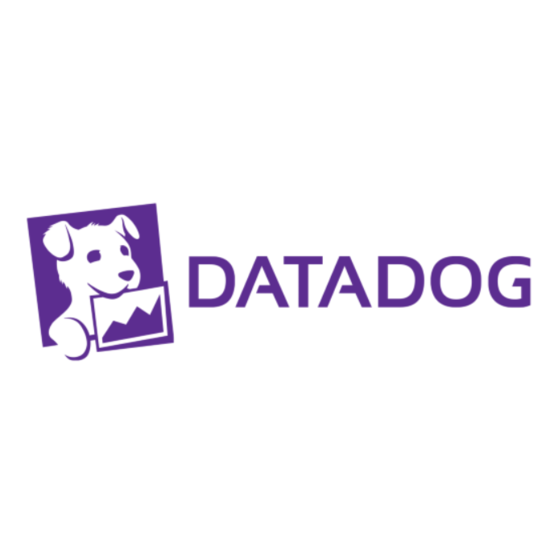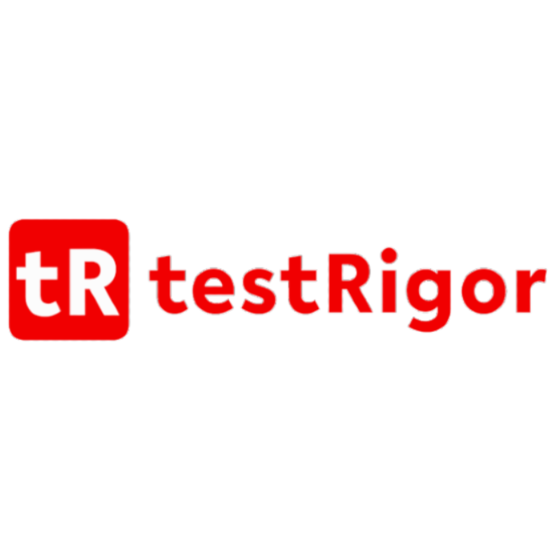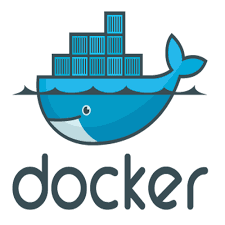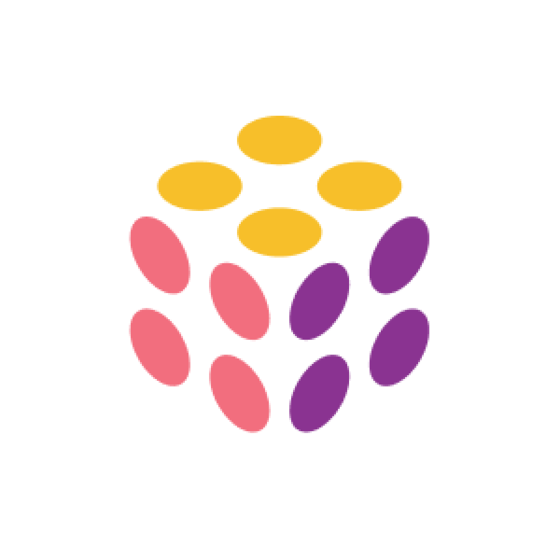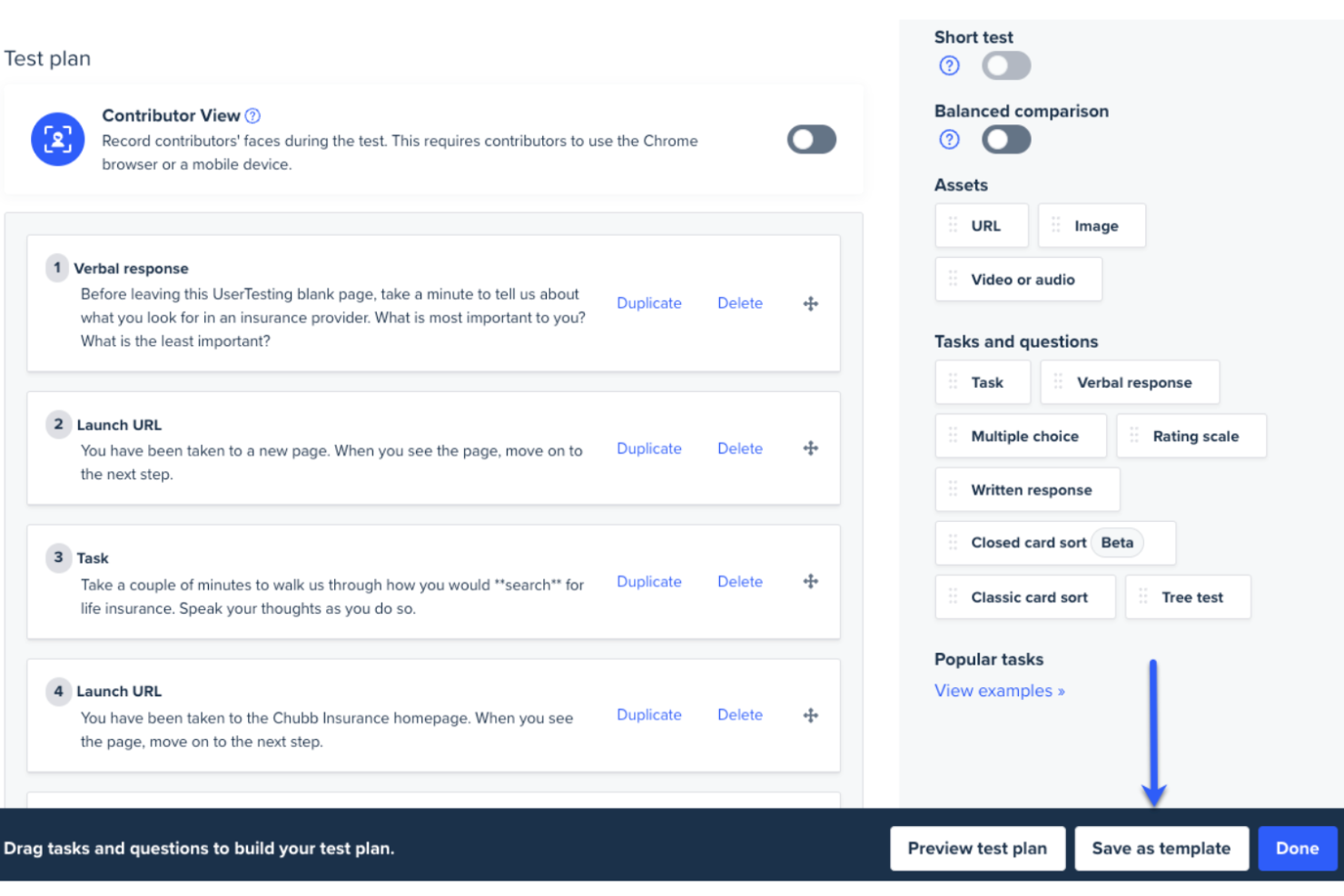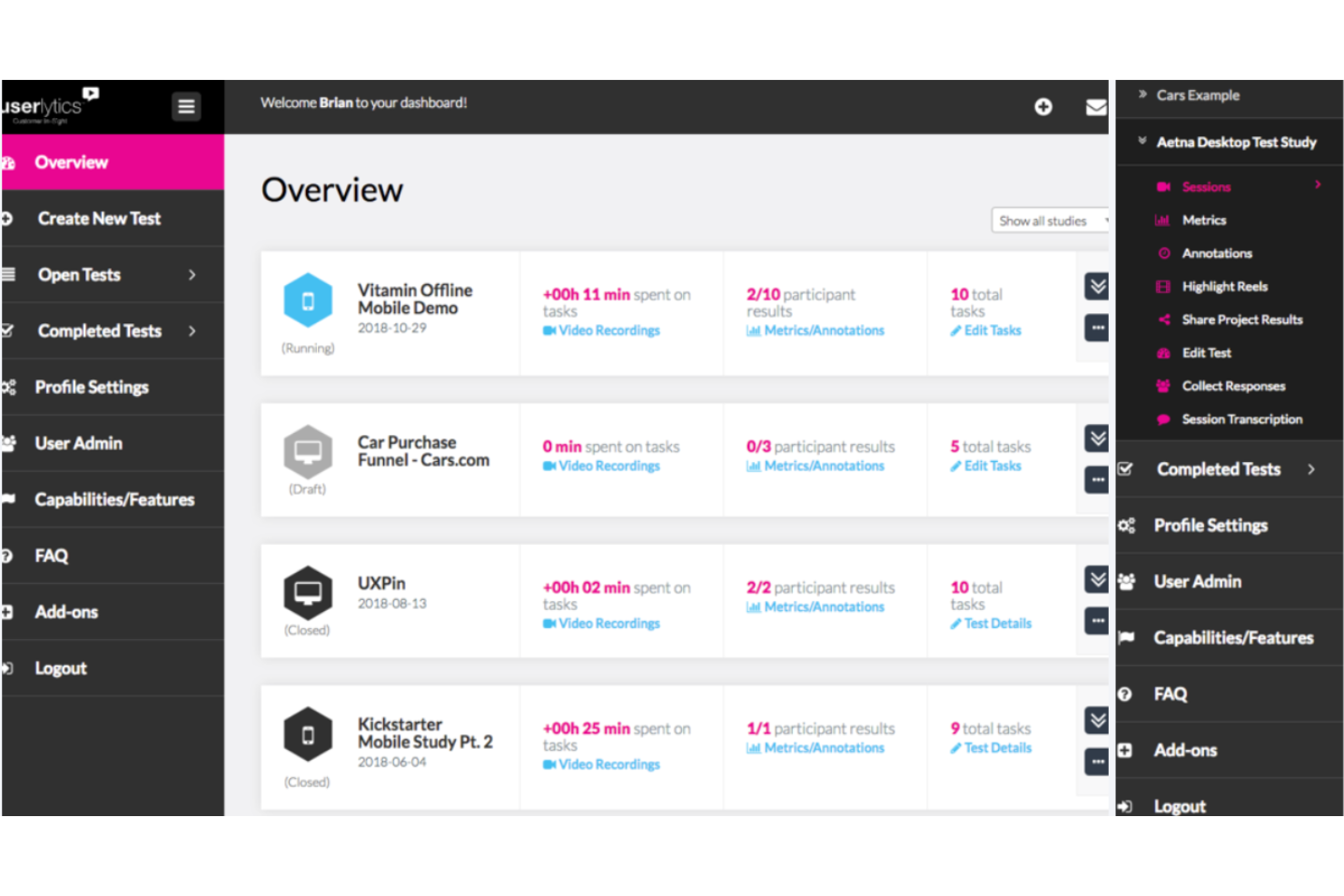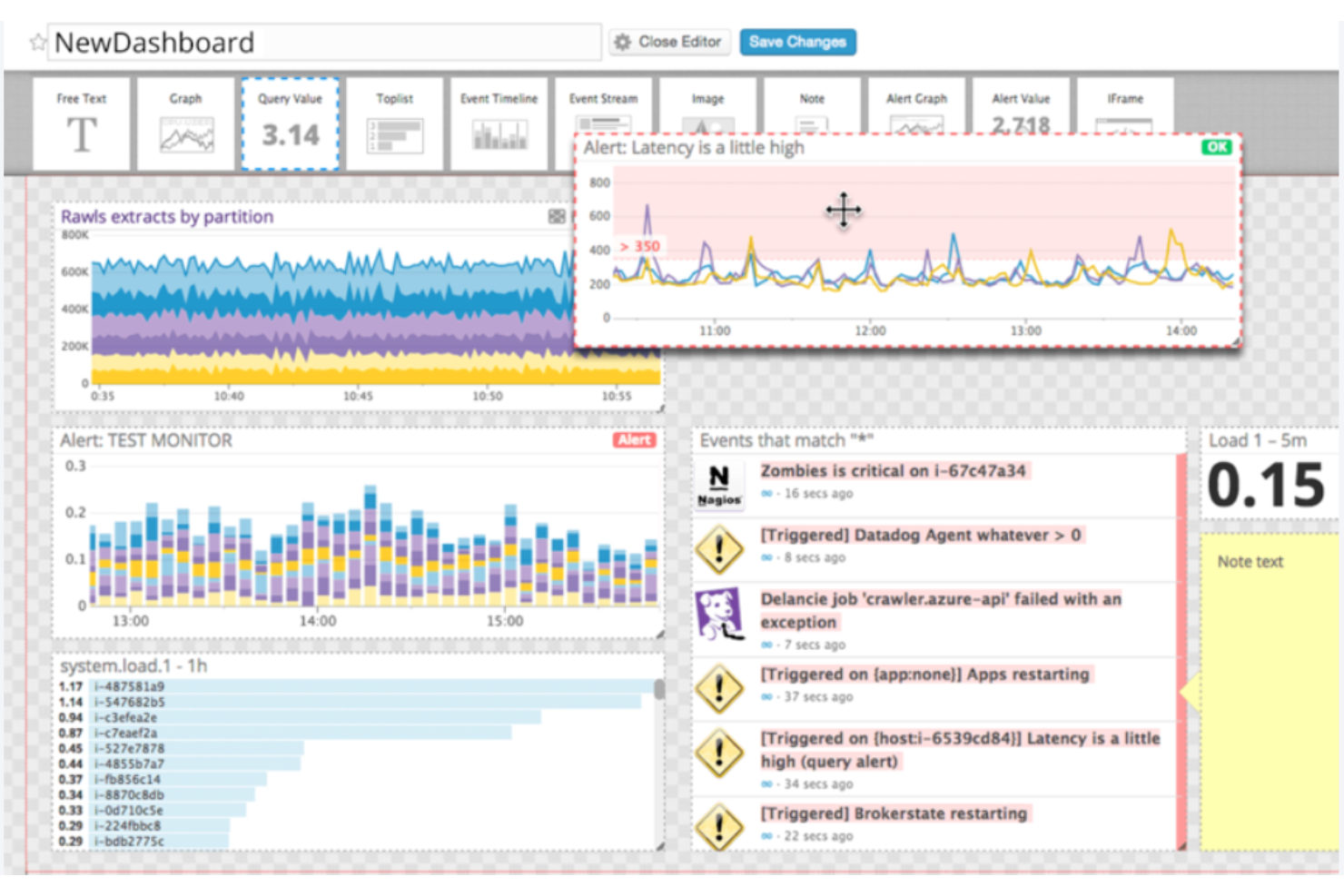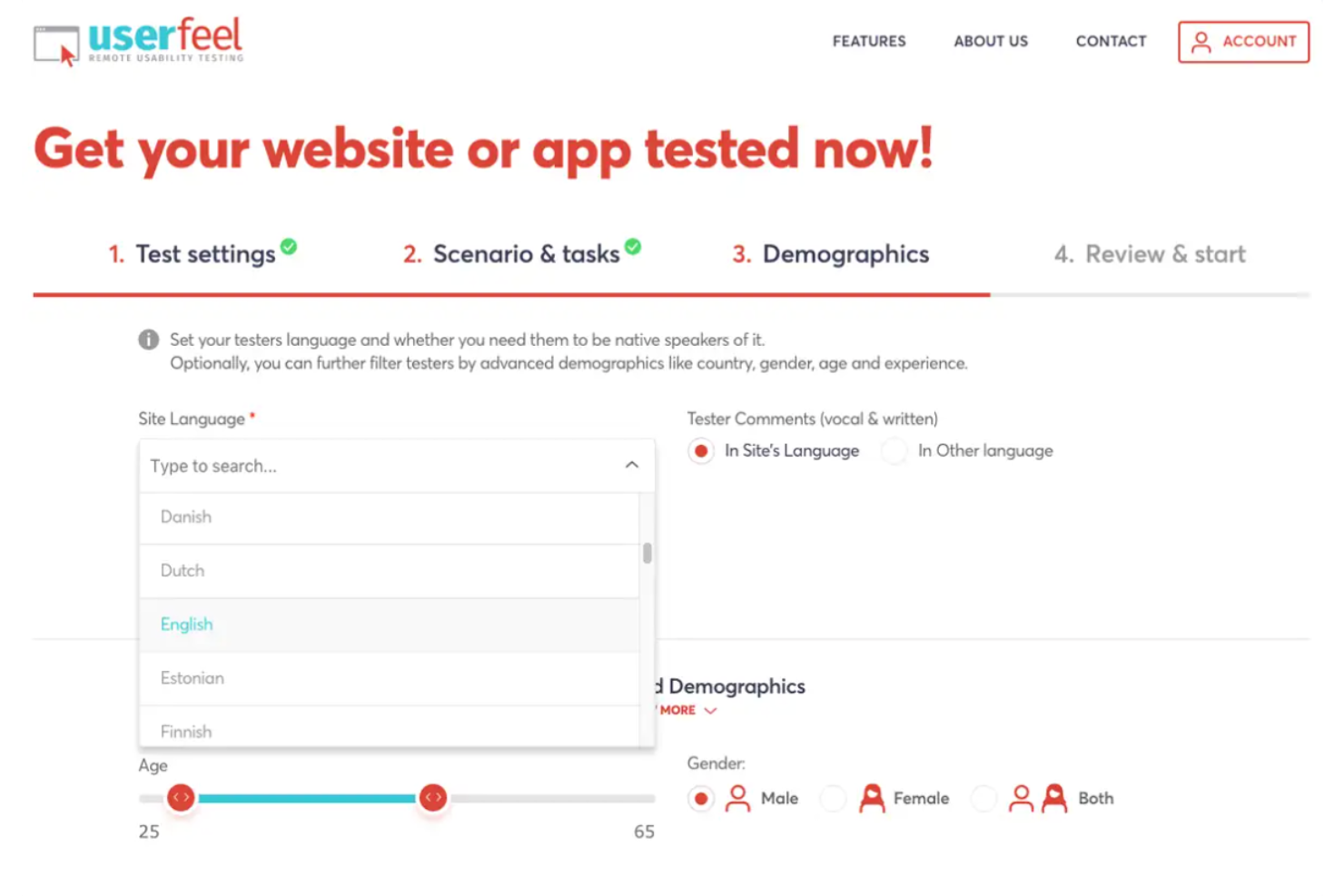10 Best Usability Testing Tools Shortlist
Here's my pick of the 10 best software from the 17 tools reviewed.
Our one-on-one guidance will help you find the perfect fit.
Creating a product that users truly love takes more than just a great idea—it requires understanding how real people interact with it. Maybe you’ve launched something you thought was intuitive, only to watch users struggle with navigation or abandon it altogether. These moments can be frustrating and costly, and they highlight why usability testing is so critical. But with so many tools on the market, how do you find one that gives you the insights you need without adding unnecessary complexity to your workflow?
Usability testing tools are designed to help you see your product through your users’ eyes, uncovering friction points, improving user flows, and enhancing the overall experience. Over the years, I’ve worked on countless projects, leveraging a wide range of usability testing tools to bridge the gap between design and user satisfaction. In this guide, I’ll share the tools I trust most and provide practical advice to help you choose the one that aligns perfectly with your goals.
What Are Usability Testing Tools?
Usability testing tools are software used to evaluate how user-friendly and effective a digital product is. These tools simulate real-world user scenarios to identify potential issues with a product’s interface, functionality, and overall user experience. They collect data on user interactions, preferences, and feedback, providing insight into how a product is used and perceived by its intended audience.
The benefits of usability testing tools include the early identification of usability problems, leading to improvements in the product's design and functionality. They help in creating more intuitive and user-friendly products, enhancing user satisfaction and engagement. By informing design decisions with real user data, these tools contribute to more efficient development processes and can give products a competitive edge in the market.
The Best Usability Testing Tools Summary
Below is a comparison chart with the use case, trial options, and pricing for each of the ten providers.
| Tool | Best For | Trial Info | Price | ||
|---|---|---|---|---|---|
| 1 | Best for in-depth human insights | Free demo available | Pricing available upon request | Website | |
| 2 | Best usability testing tool for international perspectives | Free demo available | From $499/month | Website | |
| 3 | Best usability testing tool for accessing targeted users | Not available | Pricing upon request | Website | |
| 4 | Best for third-party integrations | 14-day free trial available | From $15/user/month | Website | |
| 5 | Best usability testing tool for detailed visual reports | 30-day free trial | From $29/month (billed annually) | Website | |
| 6 | Best for A/B testing and experimentation | Free demo available | Pricing upon request | Website | |
| 7 | Best for unmoderated remote user testing | 14-day free trial | From $99/month | Website | |
| 8 | Best for AI-based test automation | Free trial available + free demo | From $300/month (billed annually) | Website | |
| 9 | Best for face-to-face interaction with participants | 60-day free trial | From $25/month (billed annually | Website | |
| 10 | Best for small businesses and startups | Free demo available | From $30/tester | Website |
-

Docker
Visit WebsiteThis is an aggregated rating for this tool including ratings from Crozdesk users and ratings from other sites.4.6 -

Pulumi
Visit WebsiteThis is an aggregated rating for this tool including ratings from Crozdesk users and ratings from other sites.4.8 -

GitHub Actions
Visit Website
Overviews Of The 10 Best Usability Testing Tools
Here’s a brief description of each usability testing tool to showcase each tool’s best use case, some noteworthy features, and screenshots to give a snapshot of the user interface.
UserTesting is a video-first platform that provides real-time, first-person feedback on testing.
Why I picked UserTesting: UserTesting offers a drag-and-drop test builder, extensive template gallery, and a powerful test distribution engine. This allows you to create exactly the test to suit your needs, and place it in the hands of the participants who matter most. Their test capabilities include card sorting, tree testing, clickstream tracking, and live interviews.
You can analyze the data you receive back from your tests with data visualization, transcripts, and highlight reels. Tasks like participant quality control are handled by AI, which accelerates tedious processes that might otherwise slow down the testing process.
UserTesting Standout Features and Integrations
Features include test builder, template gallery, card sorting, tree testing, clickstream tracking, live interviews, live conversion, and sentiment analysis.
Integrations include Jira, Slack, and Trello.
UserTesting Pricing
Pricing for UserTesting is available upon request.
Pros and cons
Pros:
- Excellent customer support
- Easy to find test responses
- Very detailed participant screening
Cons:
- Not suitable for SMBs
Userlytics is a usability testing tool with a global panel of more than 1.5 million testers.
Why I picked Userlytics: The Userlytics testing panel consists of members from more than 150 countries worldwide, who speak multiple languages. Having access to such a diverse panel mitigates the risk of unconscious bias and can provide valuable insight on cultural sensitivities that may influence your product decisions.
That being said, Userlytics also makes it easy to narrow down your search and find exactly your target persona. You can add custom screener questions at the beginning of your test to ensure that test participants match your intended audience. Their panel consists of individuals from several niche industries and roles, including neurosurgeons, c-suite executives, architects, and sales reps to name a few.
Userlytics Standout Features and Integrations
Features include A/B testing, audience targeting, analytics, calendar management, brand management, data export, and data visualization.
Integrations are not listed on Userlytics’s website.
Userlytics Pricing
Userlytics enterprise plan pricing is available upon request. DIY plans start at $499/month (billed annually), and a free demo is available.
Pros and cons
Pros:
- Easy to find niche target persona participants
- Global perspectives
- Massive testing panel
Cons:
- Lack of automation when randomizing quantitative tests
Testlio works with a network of freelance testers and quality engineers to deliver high coverage issue detection.
Why I picked Testlio: Testlio has executed more than 10 million client tests in over 150 countries. Based on your specific criteria, Testlio assembles a targeted panel of testers. Demographics, location, and psychographics are used to determine that the fit is just right to achieve the insights you need.
Testlio runs based on the principle of network testing, so that clients can scale their testing efforts quickly without sacrificing quality. Their client services team can help you execute your testing strategy, guiding you through from planning to completion. Testlio’s full-service moderated usability testing helps you to recruit participants, analyze data, manage workflows, and implement your findings.
Testlio Standout Features and Integrations
Features include mobile app testing, functional testing, localization testing, automated testing, livestream testing, usability testing, exploratory testing, payments testing, and location testing.
Integrations include project management tools like Asana and Jira, and IDEs like Visual Studio.
Testlio Pricing
Testlio offers customized pricing upon request.
Pros and cons
Pros:
- Flexible and adaptable
- Deep testing coverage
- Comprehensive support
Cons:
- No transparent pricing
Datadog is a testing platform that provides software development teams with visibility on user journeys.
Why I picked Datadog: Datadog uses synthetic tests, network performance data, logs, traces, and backend metrics to provide insight on frontend performance from the perspective of your target audience. Their real user monitoring allows you to understand user experience, and in-depth analytics help you to identify the root cause of issues like slow load time and JavaScript errors.
Datadog allows you to filter data using custom attributes and reorganize or prioritize depending on your needs. Frontend and backend data can be combined with business metrics to troubleshoot and gain insight on business impact.
Datadog Standout Features and Integrations
Features include real user monitoring, synthetic monitoring, continuous testing, session replay, dashboards, alerts, and data export.
Integrations available are extensive and include Airbrake, Amazon, Cacti, Capistrano, Cassandra, CHEF, CouchDB, Docker, Fabric, Git, Github, Google Cloud Platform, Microsoft IIS, Java, MemCached, MongoDB, MySQL, Microsoft Net, New Relic, Node, PagerDuty, PHP, Pingdom, Python, RedHat, Redis, Splunk, and Varnish Cache.
Datadog Pricing
Datadog offers a free plan for core collection and visualization. From there, pricing begins at $15/host/month. A 14-day free trial is available.
Pros and cons
Pros:
- Efficiently evaluates large amounts of data
- Simple and easy information tracking
- Detailed analytics
Cons:
- Complex user onboarding
Crazy Egg is a usability testing tool that provides detailed visual reports of user engagement.
Why I picked Crazy Egg: Crazy Egg provides a variety of visual reports including heatmaps (click activity), scrollmaps (scroll depth), confetti (individual clicks), overlay (clicks across the website), and lists (numerical reports of clicks). You can use these tools to understand google analytics data, email and ad campaign interactions, and improve conversion rates with better CTA placement.
Crazy Egg also records user sessions in their entirety, helping you to identify glitches and areas of frustration for users. You can filter these recordings by source, and then subdivide into various segments like mobile and new visitors. Their A/B testing tool is user-friendly and automatically sends traffic to the winner.
Crazy Egg Standout Features and Integrations
Features include heatmaps, A/B testing, error tracking, surveys, commenting, traffic analysis, scrollmaps, and overlay reports.
Integrations are extensive and include Wordpress, Google Tag Manager, Shopify, Wix, Squarespace, Drupal, Magento, Joomla, and Segment.
Crazy Egg Pricing
Crazy Egg plans start at $29/month and a 30-day free trial is available
Pros and cons
Pros:
- Easy installation
- Heatmaps for every landing page
- Excellent mobile support
Cons:
- Some limitations to A/B testing
Optimizely is a popular software that can be used to conduct usability testing quickly and effectively. It ensures that your application’s interface is user-friendly and intuitive by collecting important data from users on how they interact with it.
Why I Picked Optimizely: Optimizely has a wide range of features that make it ideal for usability testing purposes. With its easy to use drag-and-drop editor, you can create variations of your website or app without having to manually code each change. It also provides real-time analytics so you can see which versions are performing better than others, allowing you to adjust and optimize accordingly. Additionally, its A/B split testing capabilities enable you to test various elements against one another, helping you identify what works best for your audience.
Standout Features and Integrations
Features include A/B testing, data import & export, external integrations, analytics, conversion tracking, multi-site, referral tracking, API, dashboard, multi-user, and scheduling.
Integrations include Aprimo DAM Connector, TradeCentric Connector, Baymard Premium, Shopify Plus, Openpay, FullStory, WordPress, Instagram, and more.
Optimizely Pricing
Optimizely pricing details are available upon request. They also offer a free demo as well.
Pros and cons
Pros:
- User-friendly interface
- Can personalize the user testing experience
- Allows users to conduct A/B testing
Cons:
- Can be expensive for SMBs
- Limited participant pool
Userbrain provides quick and cost-effective usability testing for product prototypes and websites.
Why I picked Userbrain: Userbrain takes the most time-consuming parts of the usability testing process off your hands. They’ll gather real users from their user test pool to participate, schedule test times, and conduct the unmoderated usability testing on your behalf. Should you choose to work with your own testers, Userbrain can support you by supplying a link that can be sent via text or email.
Userbrain supports screen capture, video recording, and audio commenting, providing you with an in-depth understanding of any usability issues based on end-user experience. Their user testing tool enables developers to test things like wireframes, live websites, and prototypes from multiple devices.
Userbrain Standout Features and Integrations
Features include unmoderated usability testing, messaging, audience targeting, website usability testing, customizable reports, A/B testing, and screen recording.
Integrations are limited, but do include Google Analytics 360.
Userbrain Pricing
Pricing for Userbrain begins at $99/month, and a 14-day free trial is available.
Pros and cons
Pros:
- Reliable customer support
- Quick participant response
- Excellent recording quality
Cons:
- Cannot refund unsuitable testers
testRigor is an AI-driven test automation tool that simplifies software testing by allowing users to create tests with plain English instructions.
Why I picked testRigor: You and your team can create automated tests from documented cases without writing any code, which speeds up the testing process. The AI-powered self-healing capability ensures tests adapt to changes in UI automatically, reducing daily test maintenance. This feature is especially beneficial in environments where the UI is frequently updated, as it minimizes the risk of test failures due to minor changes.
Additionally, the platform supports cross-platform testing, allowing you to test web, mobile, and desktop applications. This means your team can ensure consistent performance across different devices and browsers without needing separate test scripts for each platform.
testRigor Standout Features and Integrations
Features include automated test maintenance, natural language processing, cross-browser testing, mobile testing, API testing, integration with CI/CD tools, parallel test execution, visual testing, data-driven testing, test management, test analytics, AI-driven test optimization, and test scheduling.
Integrations include Jira, TestRail, Zephyr, XRay, ReportPortal, Google Cloud Build, SauceLabs, LambdaTest, BrowserStack, Gitlab, Github Actions, Jenkins, Spinnaker, AWS CodePipeline, Travis, and CircleCI.
Pros and cons
Pros:
- Supports testing on a wide range of platforms
- Test creation in plain English
- Provides detailed analytics on test results
Cons:
- May not suit teams requiring extensive customization capabilities
- Effectiveness may vary based on the complexity of test scenarios
Lookback is a usability testing tool that provides moderated testing via a Liveshare feature.
Why I picked Lookback: Lookback offers both moderated and unmoderated UX research. Their moderated testing feature allows you to speak to participants in-person, meaning you can ask questions and further define usability problems. Session recordings are stored on the cloud so you can access them later.
Their unmoderated usability testing function allows you to set up step-by-step tasks, within which your website or prototype can automatically open for testers. You can restrict which device participants use to assess your UX design (iOS, Android, or desktop), or allow them to choose.
Lookback Standout Features and Integrations
Features include moderated and unmoderated testing, virtual observation rooms, timestamped notes, team chat, session recordings, and transcript downloads.
Integrations are not listed on the Lookback website.
Lookback Pricing
Lookback pricing begins at $25/month (billed annually). A 60-day free trial is available.
Pros and cons
Pros:
- Very user-friendly interface
- Observers can enter + exit silently
- See screen + participants in the same shot
Cons:
- Participants must share name + email
Userfeel is a usability testing platform with no monthly subscription and no limits on screener questions. They offer participant recruitment, video and audio session recordings, and the ability to share highlight videos with your team for collaboration.
Why I Picked Userfeel: With Userfeel, you can quickly and easily conduct usability tests to make sure your product meets the needs of your users. The easy-to-use platform allows you to create surveys, capture screenshots, record videos, and even monitor live user sessions. Userfeel also makes it easy for you to analyze the data you collect so that you can make informed decisions about how to improve your website or app.
Standout Features and Integrations
Features include unmoderated & moderated tests, multi-lingual, screener questions, device agnostic, tasks and ratings, notes on video, highlights videos, voice transcription, and SUS ratings.
Integrations are not listed on Userfeel’s website.
Userfeel Pricing
Userfeel costs $30/tester. A free demo is available.
Pros and cons
Pros:
- Generate feedback on navigation, layout, and content
- Records the users' screen and audio
- Conduct user testing sessions remotely
Cons:
- Only supports remote, unmoderated usability testing
- Limited participant pool
Other Options
Here are a few more that didn’t make the top list:
- Maze
For use throughout the full product life cycle
- Loop 11
For simplicity and ease of use
- Great Question
Usability testing tool for privacy and security
- Hotjar
For heatmapping
- Trymata (formerly TryMyUI)
For live product analytics
- Optimal Workshop
For qualitative research and analysis
- UsabilityHub
For testing marketing and design initiatives
How I Selected the Best Usability Testing Tools
What do I look for when I select the best usability testing tools? Here’s a summary of my evaluation criteria:
User Interface (UI):
I looked for tools that are easy to navigate, and have a visually appealing design.
Reporting:
I selected tools that allow you to pull detailed reports on user experience and feedback.
Integrations:
I chose tools that integrate with other platforms that your team is likely already using.
Value for Pricing:
I picked tools that are cost effective while offering a wide variety of features and functions.
People Also Ask
With so many different types of usability testing, it can be challenging for product managers to sift through all the options. Let’s learn a little bit more about UX research so you can stay competitive in your industry and choose the right platform to suit your needs.
What Are Usability Testing Tools?
Usability testing is a method of testing in which you observe real users interacting with your app, website, or digital product to discover usability problems and resolve them. Usability testing tools help you recruit participants, conduct testing, gather research, and share findings with your team during the design process so that improvements can be made during the prototyping phase and beyond. They can also help with accessibility testing for users with disabilities.
Why Is Software Testing Important?
Having spent so much time developing your product, it’s easy to wind up with some blind spots when it comes to user experience. Remote usability testing allows you to observe real users as they work with your product, surfacing issues that could cause problems down the road post-launch.
Do participants find your product easy to navigate? Can they complete tasks in a streamlined and efficient manner? Can they understand how your product works without getting confused? User testing answers all these questions.
In Conclusion
Usability testing is critical to understanding how your end user will interact with your final product: what are their pain points and what do they want more of? Usability testing can help you figure that out and make the best product for your audience.
And to stay up to date on all the latest news, tips, and tricks from your industry, don’t forget to subscribe to our newsletter.
